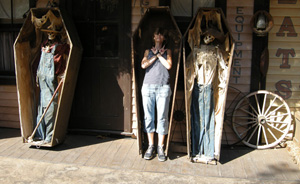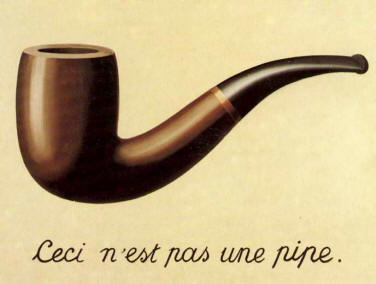Tuesday, 11 December 2012
Thursday, 6 December 2012
Audiences.. so basically... YOU!!
MORNING!
Hope everyone is well - today we will be looking at audiences specific to the Music Industry.
Let's find 5 facts about their behaviour..
There tend to be two types of audiences in the Music Industry;
Active
&
Passive
Active - An active audience is where an audience can participate in a website.
EXAMPLE
YouTube enables an audience to be active because of the ability to upload, share, copy and past the links, comment, like, subscribe etc.
Passive - An passive audience is where the audience observing a media text aren't really involved in the process.
EXAMPLE
When the internet first went live, people weren't able to interact with websites, therefore it being passive, however now, we can interact with the web and edit, and change stuff.
5 points.
1. Audiences can interact, upload, like etc
2. Repetition sells music to audiences, and the constantly listen to the music being marketed to them. Therefore making them active.
3. They use mobile phones and laptops
4. All of these platforms are available to use on different operating systems and software.
5. Audiences are able to listen on the go, any place, anywhere, due to streaming and the installation of Wireless Internet.
Friday, 23 November 2012
I'm Back! And our film idea..
Hello everyone!
I am now back from my long term and holiday(ish) of revision!
We have been set the task to come up with a movie, and make a title sequence. I have come up with this film, but have also decided to carry on the project, externally.
NOTE - All people in the UK who are looking to be involved please do message me, and we can incorporate us all together!
HERE IS OUR PRODUCTION LOGO!
Take 5 Productions :) Logo is coming later today.. Stay posted!
I am now back from my long term and holiday(ish) of revision!
We have been set the task to come up with a movie, and make a title sequence. I have come up with this film, but have also decided to carry on the project, externally.
NOTE - All people in the UK who are looking to be involved please do message me, and we can incorporate us all together!
HERE IS OUR PRODUCTION LOGO!
Take 5 Productions :) Logo is coming later today.. Stay posted!
Monday, 12 November 2012
Merlin Extract - Example essay.
This is an essay in response to G322 Section B - Merlin. Have a look and a gander and let me know what you think!
Merlin
The editing of the start of the scene is mainly focused on the pace of the shots. When Merlin is entering the room and in the room the shot pace is very fast and jumpy, this creates the feeling that he’s not meant to be in the room. That reflects his status showing how he’s of a lower class and is forbidden in the castle. In contrast to this, the woman walking in the hallway gets quite a calm and slow paced shot, which demonstrates a higher authority over Merlin.
Another example would be when in the middle of the fight there is a cut of to the man in the tower looking down at the fight. The way he’s looking down at it and his calm yet annoyed reaction could resemble the fact that he is going to have some authority in the narrative.
There is very obvious editing technique near the end of the fight when there is an extreme close-up of the eye and it shows how it changes colour. This ties in with Alfred Hitchcock’s theory of the bomb theory, where the audience become aware of the situation but the characters are oblivious. This is a very good technique as it intrigues the audience and gets them to try and interact with the audience.
After the fight, when Merlin turns around to face the crowd watching, there is a shot reverse shot edit to the man from the tower in the crowd then back to Merlin again. You can instantly notice the change in Merlin’s facial expression when he notices the man. This shows that he sees him as a parental figure and is disappointed that he witnessed the fight between him and the prince as his facial expression drops in disappointment.
The use of camera angles in the extract from Merlin shows the importance of certain items and people in the clip. An example of this will be at the start after the establishing shot of the inside of the castle, the main character picks up certain items such as a book. The camera then does a close up of the book suggesting it is important for the narrative of the extract. The use of a close up is also used when the lady enters the room and surprises Merlin, and his reaction is shown through a close up of his face. A further close up is used to show Merlin's use of magic during the fight scene. There is an extreme close up of Merlin's eye changing clolour which shows the audience Merlin is using magic, however, the rest of the characters do not know about his use of magic. This gives the audience the feeling that they have superior knowledge to the characters in the clip as they are oblivious to fact that Merlin is doing this. The camera movement in the clip gives the audience emphasizes the suspense and action of the fight scene. There is the use of a shaky camera during the fight scene which gives the viewer the impression that they are actually there and involved in the action.
The Mise en scene throughout the sequence is mainly dark, gloomy and eerie reflecting the time era of the medieval period. The extract that represents the difference in class of society by using mise en scene consists a variety of different elements. The setting in the first scene shown in the sequence is of high class as the architecture is grand, consisting pain glass windows which indicates the idea that the house is of a high social status. The colours of the clothing used throughout the scene helps give understanding of the characters class. The royal purple of the female characters dress represents a high social status whereas Merlin’s clothing consists of brown and green which connotes a poor, lower level of class. The dialect of the characters also plays a big role in the idea of class throughout the sequence as the female character and Arthur’s accents indicate that they are of a higher status. On the other hand Merlin’s dialect reflects a lower class of society.
During the fight scene the audience can notice that Arthur supplies them both with a metal, heavy weapon whereas later on in this particular scene Merlin uses less expensive objects such as the rope and stool dividing there social class. Also at which the skill that Arthur uses his weapon shows that he has a higher class. Arthur’s costume consists of metal plating and armour, and he also has guards at his side this immediately signals that he is of a higher status. The lighting aspects at the end of the fight scene show Merlin silhouetted so that he is hidden whereas Arthur has all lighting on him to represent a higher class and status. The older character shown in the tower is seen as more superior as he looks down onto the courtyard where the two men fight. The mise en scene in the tower is dark and mysterious which could reflect the idea of magic and that his class may be higher compared to Merlin as he has mastered the idea of magic.
The scene opens with eerie music consisted of deep hollow noises. The music is atmospheric and establishes the suspicious tone of the scene. You can still hear above the music the clutter and falling of objects as Merlin looks around the room, representing his nervousness and anxiety. He knows he shouldn't really be there. You then hear footsteps build in pace over the music and as the footsteps quicken all sounds; the music, the noises, the footsteps all come to a halt as the woman enters the room. The end of the noise shows us how important the woman is. She seems to be of a high class and high authority. She seems confident as she confronts Merlin as she asks him what he is doing there, again backing up how Merlin is where he shouldn't be. However when the woman looks in the mirror and sees her aged self staring back at her a disturbing noise cuts through the silence and shows how the high classed woman is quite shocked and un-comforted by her distorted reflection. As Merlin leaves the castle and enters the village outdoors, we hear commotion, animals, people, which gives over a feeling of normality. The common noises contrast from the eerie music before, which shows how Merlin is a lot more comfortable being back to normality.
When Merlin is confronted and begins to fight with the lord, fast paced music enters the scene which gives the audience a feeling of excitement and anticipation. The action based music is fast paced and energetic but as Merlin falls and shows off his lack of skill with his weapon and balance the music become jumpy, Skippy and comical, representing his clumsiness and vulnerability due to his lack of fighting skill. When Merlin uses magic and begins the gain the upper hand in the fight the music lifts, telling the audience that Merlin is going to win. The whole time objects falling and weapons can be heard adding to the action and commotion which adds to the excitement. When Merlin is distracted by his teacher he is hit three or four times and the end of the music is in time and shares the beat with the final blows. The synchronized sounds emphasize the end of the fight. The end of the music is the end of the fight. The music heard after the fight is calm and slow, like the calm after the storm; the music greatly contrasts with the upbeat music heard during the fighting. There is a slightly high pitch to the music which gives the audience a sense of suspicion, especially when the lord feels there is something strange about Merlin.
There is also foleys used in the clip of Merlin. An example of this would be when Merlin is walking through the town and his footsteps had been done through the use of foley. Foleys usually go unnoticed as they are intended to blend in with the rest of the scene. There was also the use of a sting at the end of the fight sequence between Arthur and Merlin. The sting was used just at the end when Arthur did three strikes on Merlin and the music uses three sharp sounds to emphasize the strikes. This has a dramatic yet almost comical effect on the audience as through the use of this sound, they know that the fight scene is over.
Monday, 22 October 2012
Spooks Analysis! Woo!
Here is the scene of spooks that I was given to analyse for my homework. Comment and let me know what you think! :D
http://www.youtube.com/watch?v=uq9bK9YeTsI
http://www.youtube.com/watch?v=uq9bK9YeTsI
In this extract of Spooks close up’s and extreme close up’s are used
quite frequently. For example there is a close up of the male spy sat at the
table, also a close up of the female spy talking to the Iraqi. These close ups
are used to show the emotions on the characters faces, the spy’s do not look
scared or frightened but look quite calm and prepared for what may happen to
them. On the other hand an extreme close up is used of the other man holding
them captive, this is showing the character as very angry with the two spy’s.
This is telling the audience that the two spy’s have annoyed the Iraqi man
because they have tortured his people and ruined his country. Another extreme
close up is used when the photograph gets put down infront of the spy’s, this is
an extreme close up so that the audience can see the man in the photograph and
clearly see he has been hurt. This emphasizes that a lot of people are hurt
during the process of what the spy’s are trying to do.
Long shots have been used in this extract, for example at the beginning
of the clip there is a high angle, extreme long shot. This shot is used so that
the audience can see the setting and realise that the two spy’s have been
captured and that there is no one there to save them. Medium shots are also used,
for example when the man is walking whilst talking to the spy’s. This medium
shot is used so that the audience can see the character close enough to
establish what type of man he is by his body language; he is angry at the spy’s
for ruining his country.
Over the shoulder shots are used, when the female spy is talking to the
Iraqi man you can see the male spy.This is used so that you can see the
reaction on his face as you can hear what the woman is saying. A shaky cam is
used during parts of this extract, for example when the Iraqi man is walking
around, and also when the camera moves from the camera in this scene to the man
standing behind it. Shaky cam is used slowly to create a tense atmosphere for
the audience but also to create a sense that somebody is watching them.
A Pull focus is used twice in this extract, for example when the female
spy is sat in the chair and talking to the camera. The shot starts by focuses
on the woman, and then pulls to focus on the camera previewer. Pull focuses are
used in this extract to allow the audience to see what the viewers of the
camera tape will see. It gets across to the audience the tensity of what she is
saying into the camera.
The editing in this extract involves slow cuts from clip to clip. At the
start of the extract slow cuts are used, this is allowing the audience to feel
the tensity but to not feel scared that something violent will happen. This is
giving the view that the ethnic group of Iraqi’s are not about violence but
care for their country. Towards the end of the extract faster cuts are starting
to be used, this is because the characters are starting to get worried at what
might happen to them as they have seen the photograph of their fellow spy. The
faster cuts gets the audience feeling more scared along with the characters.
Cut away’s are used also, for example a cut away is used when the camera
goes to the man with the mask holding the gun. This cut away is reinforcing to
the audience that their is danger and violence involved in this captive of the
spy’s. There is another cut away of when the male spy has a knife held up to
his throat, this again is reinforcing violence and creates a sense of worry for
the audience of the characters well being. When the photograph is put down on
the table a flash effect is used. A white flash occurs and then the photograph
is more zoomed in. This flash effect symbolises the sudden rush of worry that
the characters feel as they realise that they could be in more danger than they
first thought. The audience feel this as they see the flash and focus on the
photograph. Also eyeline matches are used, for example when the female spy is
taken away to the other part of the room, you see the male spy looking at where
she has gone. Then the camera focuses on her sitting down on the chair. This
eyeline match emphasises to the audience that the spy is worried at what will
happen to his collegue and wants to watch her every move.
Throughout this extract of spooks, there is a dialogue between the
characters. This dialogue helps the audience to understand what is going on in
the scenes. The score in this extract is very mysterious, it is very deep and
slow. The mysterious score helps to emphasise the fact that non of the
characters know what is going to happen to them and what the Iraqi man’s
intentions are. The score helps the audience feel the emotions of the
characters. The score levels change and get louder as the pace of the action
starts to get faster. For example when the man is getting angry and starts to
raise his voice at the male spy the score gets louder. The changing of
different levels of score allows the audience to realise that something bad
might happen, it creates more tensity for the audience as they watch.
Amplified sounds are used, for example when the photograph is being put
down on the table the man slams it down. This is amplified to make it seem more
important that the spy’s know the man There is also ambient sounds used, for
example at the end of the clip when you hear the door handle go on the door,
this is letting the audience know that the characters are now alone, it creates
a tension.
Throughout this
extract of spooks there has been use of camerawork, editing and sound and music
that have all help represent the ethnicity in this Tv Drama. The ethnicity of
the Iraqi men have come across that they are violent, intimidating and
dangerous. This is all through the fast pace camerawork, the mysterious sound
and the effects used. They have all contributed to allowing the audience to
make an assumption of what these ethnic characters are like.
9 Frame Opening

Here is the 9 frame opening for Juno - the film.
Take a look at the trailer!! http://www.youtube.com/watch?v=K0SKf0K3bxg love it!
Sunday, 21 October 2012
Monday, 15 October 2012
Friday, 12 October 2012
Film Production Company Analysis!
So Film Production companies are the essence, the creme de la creme of our film enjoyment. Every single film you watch has been produced by one of thousands of companies.
Let me show you one, and we are going to deconstruct them, using our knowledge of Anchorage and Semiotics... All ok so far?
GREAT!

Take Two Productions - Their logo is VERY simplistic - It has the two T's (Take Two) Simple right? BUT using semiotics, if we were first looking at this logo, if we had never seen it before, we would know it would be something to do with film or video because of the video film running along the central line of the logo. A* answer I guess..
Our film is almost done!
OK GUYS.
Over the past few days I have been filming and editing a movie trailer, entitiled, "Lost in the World" It's pretty ace I must say. It SHOULD be uploaded later today! eek!
It Stars Mighty_Media Girl Megan and Hamish McKirdy, both of which are excellent in this film. I shall upload a screen shot a bit later.
Another thing I must say is I apologise for my absence of blogging over the past few days, but it will all be worth it in the end!
Let me know if you want me to investigate anything for you media wise, and pretty much anything! Not murders though.. that's not my expertise.
Let me know what you think of our LOGO!
Tuesday, 9 October 2012
Preliminary Task
Preliminary Task!
180 Degree Rule -
A rule stating that a camera should be placed somewhere inside 180 degrees on a particular side of the invisible line of a shot containing two people filmed in sequence. If the camera crosses the line, confusion results for the film viewers, because it makes it look like the people are switching places as one watches the film.
Match On Action -
Match on action is a very sinple but essential tenchique, where the perspective of the camera changes during a scene and the scene continues to flow.
Shot -Reverse-Shot - Shot reverse shot (or shot/countershot) is a film technique where one character is shown looking at another character (often off-screen), and then the other character is shown looking back at the first character. Since the characters are shown facing in opposite directions, the viewer assumes that they are looking at each other.[1][2]
Tuesday, 2 October 2012
Camera Movements! :D
Camera Movements!
This page outlines the standard types of camera movement in film and video. In the real world, many camera moves use a combination of these techniques simultaneously.
I have written these in Plain English so that they are easy to remember and understand! Aren't you lucky to have someone like me.. no? okay!
Here are the terms with some images of the equipment beside them.
A less-common term for tracking or trucking.
| |
The camera is mounted on a cart which travels along tracks for a very smooth movement. Also known as a tracking shot or trucking shot.
 | |
A technique in which the camera moves closer or further from the subject while simultaneously adjusting the zoom angle to keep the subject the same size in the frame.
 | |
The camera physically follows the subject at a more or less constant distance.
 | |
Horizontal movement, left and right.
 | |
Moving the camera position vertically with respect to the subject.
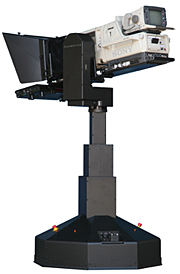 | |
Vertical movement of the camera angle, i.e. pointing the camera up and down (as opposed to moving the whole camera up and down).
 | |
Roughly synonymous with the dolly shot, but often defined more specifically as movement which stays a constant distance from the action, especially side-to-side movement.
| |
Another term for tracking or dollying.
| |
Technically this isn't a camera move, but a change in the lens focal length with gives the illusion of moving the camera closer or further away.
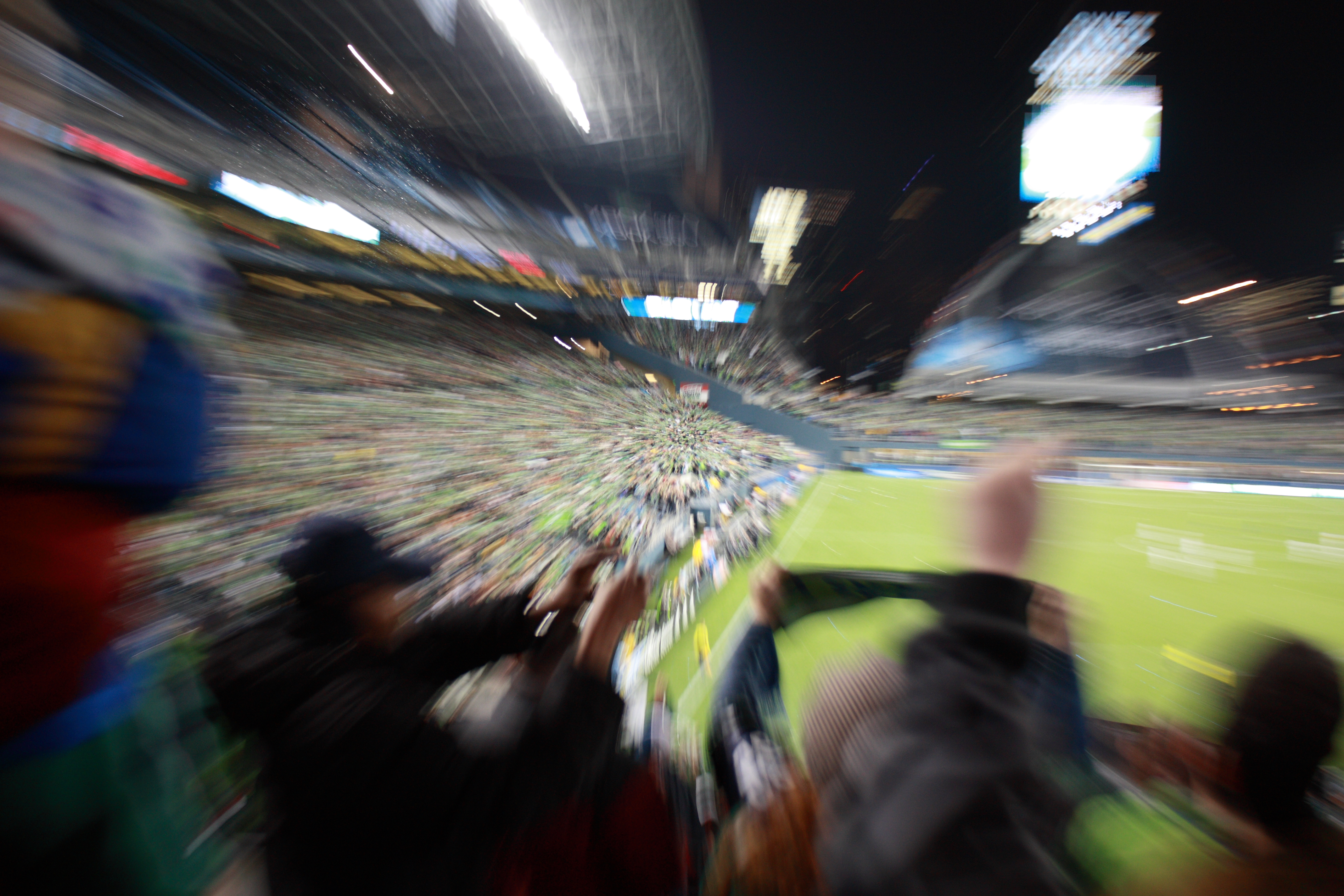 |
Thursday, 20 September 2012
Anchorage!
Anchorage
Pretty simple stuff... anchorage is basically used in media to attach meaning to something through either the matching of words to images or the juxtaposition of two images which construct a meaning.
For example in advertising, an image alone is polysemic- open to a range of interpretations. To clarify what the image means and so to make the image relevant to the purpose of the advert, text can be added. Thus the image serves as the 'hook' while the text anchors meaning. This can be said also for photographs attached to newspaper articles. The same photograph takes on different connotations with different accompanying texts.
For example in advertising, an image alone is polysemic- open to a range of interpretations. To clarify what the image means and so to make the image relevant to the purpose of the advert, text can be added. Thus the image serves as the 'hook' while the text anchors meaning. This can be said also for photographs attached to newspaper articles. The same photograph takes on different connotations with different accompanying texts.

So this Rose is a rose.. but has connotations of love, marrige or even death.
This also uses semiotics... stay posted for more media terms and information!
The Amazing Art of Camera Shots and Angles! EEK! FUN!
Camera Shots and Angles
A Little Definition..
The view of a camera .. Pretty Simple?
SOOO.... Let's watch a video
http://www.youtube.com/watch?v=dhbZRc2tntg&noredirect=1 - This video pretty much sums all the angles and shots up in a nutshell.. if you have the time, please do hit up the link and watch it. This guy is a master in photography and camera techniques, for all you budding film makers out there!
Extreme Long Shot;
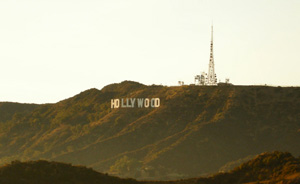
The extreme long shot on the left is taken from a distance, but denotes a precise location - it might even connote all of the entertainment industry if used as the opening shot in a news story.
Long Shot;
This is the most difficult to categorise precisely, but is generally one which shows the image as approximately "life" size ie corresponding to the real distance between the audience and the screen in a cinema (the figure of a man would appear as six feet tall). This category includes the FULL SHOT showing the entire human body, with the head near the top of the frame and the feet near the bottom. While the focus is on characters, plenty of background detail still emerges: we can tell the coffins on the right are in a Western-style setting, for instance.
Medium Shot;

Close Up
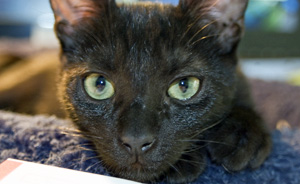
Extreme Close Up
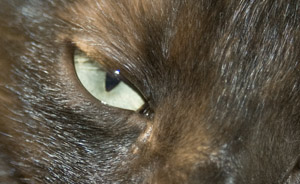
So there are some pretty detailed explanations about the different kinds of shots movie directors would use in TV Drama's or Films. I will post a blog later today showing examples of these shot's used in the Film-Making Business.
BUT
Let's move on to ANGLES..
Birds Eye View
Pretty much what it says on the tin!
High Angle
Not so extreme as a bird's eye view. The camera is elevated above the action using a crane to give a general overview. High angles make the object photographed seem smaller, and less significant (or scary). The object or character often gets swallowed up by their setting - they become part of a wider picture.
Eye Level
A fairly neutral shot; the camera is positioned as though it is a human actually observing a scene, so that eg actors' heads are on a level with the focus. The camera will be placed approximately five to six feet from the ground.
Low Angle
These increase height (useful for short actors like Tom Cruise or James McAvoy) and give a sense of speeded motion. Low angles help give a sense of confusion to a viewer, of powerlessness within the action of a scene. The background of a low angle shot will tend to be just sky or ceiling, the lack of detail about the setting adding to the disorientation of the viewer. The added height of the object may make it inspire fear and insecurity in the viewer, who is psychologically dominated by the figure on the screen.
Oblique/Canted Angle
Sometimes the camera is tilted (ie is not placed horizontal to floor level), to suggest imbalance, transition and instability (very popular in horror movies). This technique is used to suggest POINT-OF-View shots (ie when the camera becomes the 'eyes' of one particular character,seeing what they see — a hand held camera is often used for this.
So there we have it! Camera shots and Angles in a Nutshell
Thursday, 13 September 2012
MediaMeans2012 - Semiotics!
Semiotics!
The Science of Signs..
A little definition: Semiotics, also called semiotic studies or semiology, is the study of signs and sign processes (semiosis), indication, designation, likeness, analogy, metaphor, symbolism, signification, and communication.
For example! A famous painting like this one, is called, "This is not a pipe."
People may say, "well.. it is." However.. The artist has use Semiotics here. This isn't actually A pipe; it's a picture/painting OF a pipe. This is how film directors, authors and all other media designers of media texts, use Semiotics to place more meaning into an object or a SIGN.
So let's get a bit more contemporary.. Look at this advert..

SO! First and foremost, this advert is advertising a watch. Semiotics is used because of the similatity between the model and the watch. She is a very pretty woman, sexy, slick and sophisticated. This is used to resemble the watch. Her posture is in the same place as the watch, so we automatically make this link.
SO!
In Short.. and in plain English.. Semiotics is the science of signs.. that media advertisers use to place more meaning into media texts. It allows media to be taken apart - deconstructed - to show how meaning can be conveyed in media :)
MediaMeans - Welcome!
Hello!
This is a blog, created by an A Level Media Studies student, posting all about what media is and what techniques are used. If you are also an A Level student, studying the same thing, please do send me a message and I'll post about an issue or topic that's confusing... Stay posted on MediaMeans! :)
H
Subscribe to:
Comments (Atom)





